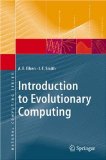Late to get involved as ever, I’ve been developing with Android for the last couple of weeks. On the whole it has been a positive experience (thanks to Richard for pointing me in the right direction with my queries).
My first impression is “what the hell were Sun doing for the last decade?” Android shows what J2ME/JavaME could have been. A proper Java environment for mobile devices (the fact that it uses Dalvik is largely inconsequential). J2ME may have first arrived when mobile phones were far less capable than they are today but, like Java in general in the last few years, it never really progressed. Worse still, with its numerous device profiles and JSRs it betrayed the “Write Once, Run Anywhere” philosophy that is so fundamental to Java. With J2ME it’s more like “right once, wrong somewhere else”. You don’t really write Java at all, you write some horribly restricted, out-dated subset of it. That’s not to say that J2ME was not a success of sorts despite its numerous short-comings. I don’t have the figures to hand but I believe it’s true to say there are vastly more J2ME-enabled devices in circulation than iOS and Android devices combined.
Pain-Free Mobile Development
Android is a complete reboot of Java for mobile devices. No longer do you have to worry about which devices support floating-point arithmetic or how to do anything useful with an anaemic UI toolkit. No more making do with Vectors and without generics, or wondering what happened to half the useful classes and methods that you take for granted with JavaSE.
Of course, nothing’s perfect. The API documentation, while generally pretty good, is not quite up to Sun’s high standard, the UI toolkit is either slightly buggy or slightly unintuitive (probably both), and a couple of things I wanted to achieve were less straightforward than I might have hoped. These however are minor gripes. The resources framework seems to do a pretty good job of dealing with the differences in platform versions and screen sizes. As Sun no doubt learned from J2ME, there is a real risk of fragmentation when different manufacturers want to deliver different capabilities. So far it seems under control.
The documentation favours Eclipse throughout but fortunately it’s pretty painless to develop Android code without it. The Ant tools are fine and, if necessary, it seems flexible enough that I could move things around to employ more sophisticated builds. I’m not sure how easy it is to use TestNG in preference to JUnit when using the Android tools. At the very least it would be possible to just bypass the Android test project stuff and test your Java classes the way you normally would. Given that Cedric was heavily involved in Android it’s mildly surprising that TestNG support is not included out-of-the-box.
Android Market
Yesterday, after paying the $25 registration fee, I pushed my first two (pretty basic) apps to the Android Market. This is an area where Google has room for improvement. It’s all a bit simple at the moment. As I’m in the UK my prices are set in pounds. There is no way to specify different prices for different currencies, nor does the market automatically convert prices for users. That means that, as a user, you are presented with application prices in at least four different currencies (US dollars, Euros, Sterling and Yen) and have to do the necessary conversions yourself. I would like to be able to specify that if my application costs £1.99 in the UK, then it should be $2.99 in the US and €2.49 in the Eurozone.
The other thing you can’t do is respond to user comments. Somebody left a comment that my app did not work properly for them. Unfortunately they provided no details to enable me to track down the problem. Worse, they wrongly assumed that the functionality was simply missing and stated as much. As the only comment on the app so far, that will likely dissuade other people from buying.
The good thing about the Market is that you have the freedom to upload pretty much whatever you want and to have it immediately available to users. Unlike the iPhone, you are not subject to the whims of an inconsistently applied approval process.
My First Apps
So what did I make? My first app is a simple utility for performing a multi-stage fitness test (a.k.a “Beep Test” or “Bleep Test”). It’s a one-button UI that emits the necessary beeps at the appropriate intervals and displays status information such as current speed and cumulative distance.
My second app is an educational game called Flagpole. All you have to do is identify flags. You get one point for each correct answer and it’s game over when you get one wrong. It’s divided into challenges of increasing difficulty, so you might start with South America, for which there are only 14 flags to identify. Eventually you’d progress to “The Whole World”, which would require you to correctly identify 232 flags without making any mistakes.
I intend to release further, more sophisticated applications in the coming weeks. These apps are sold via Rectangular Software, which is the new home for my commercial software development activities (contract/freelance development and now applications). My open source projects remain here at uncommons.org.



